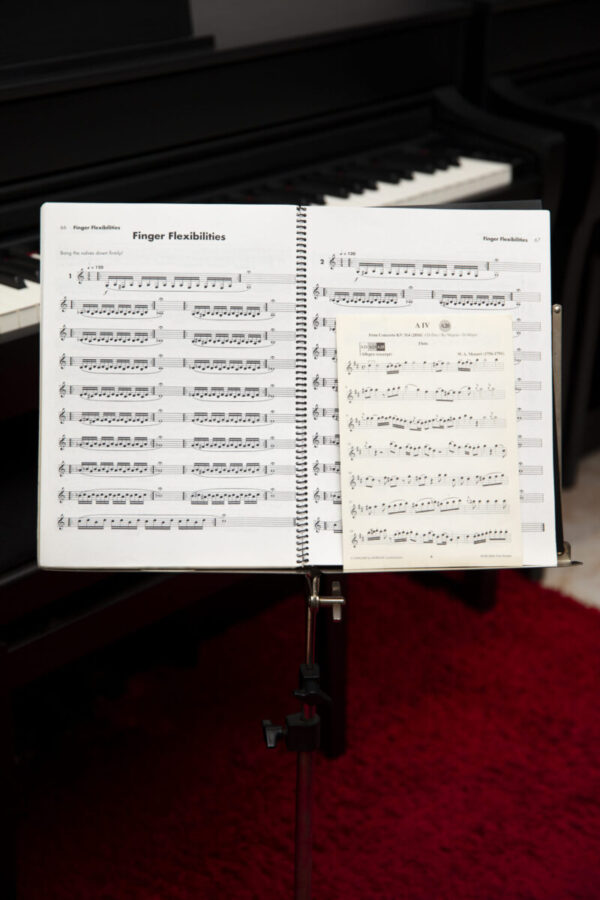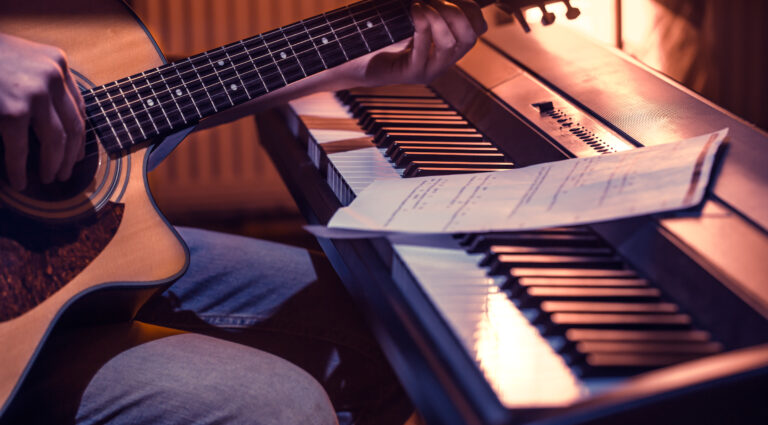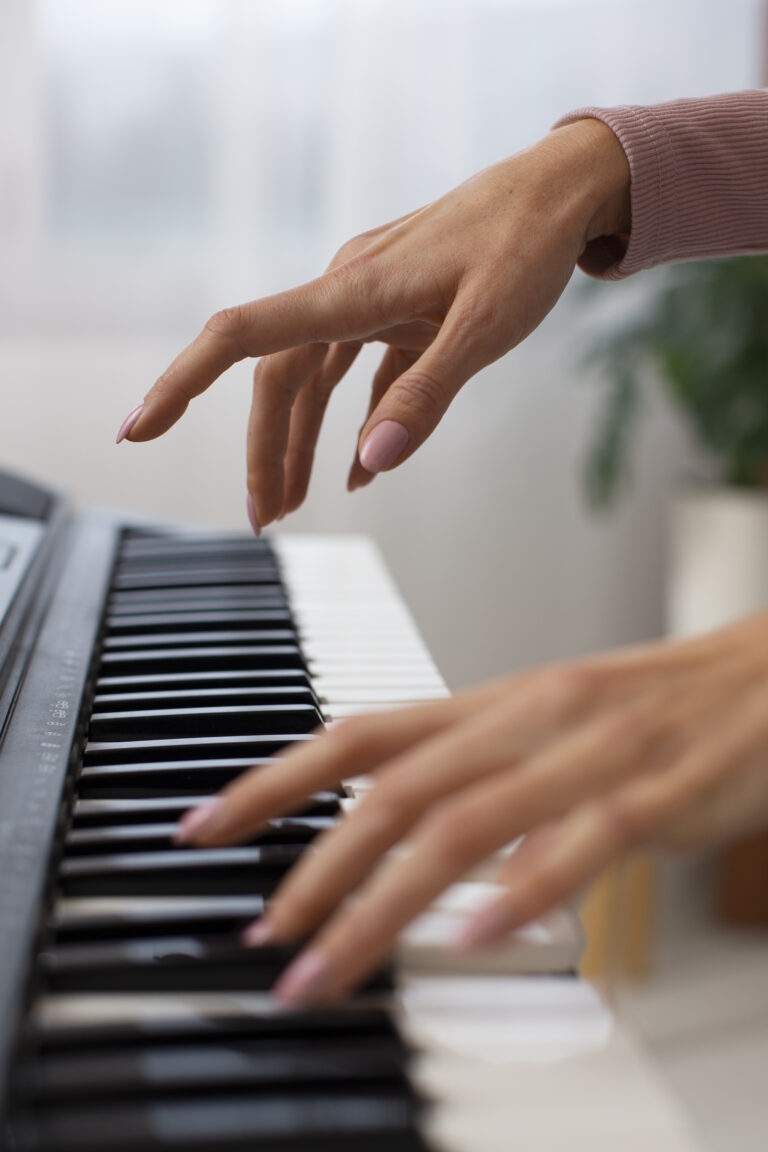What is the Piano Score? A Clear Explanation for Beginners
If you’re new to playing the piano, you may have heard the term “piano score” thrown around without really knowing what it means. Simply put, a piano score is the written music notation for a piece of music that is meant to be played on the piano. It includes both the treble and bass clef staffs, as well as any markings for dynamics, tempo, and expression.
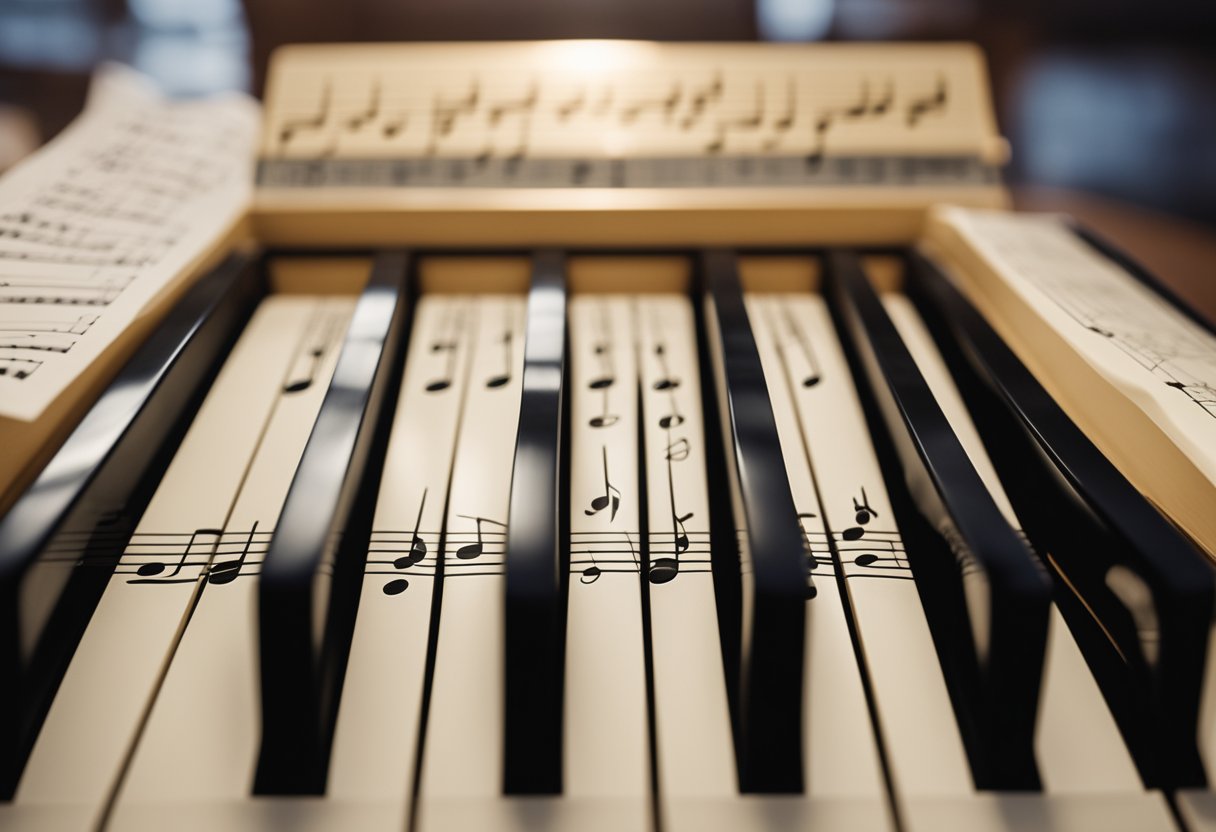
When you’re learning a new piece of music on the piano, the piano score is your guide. It tells you which notes to play, when to play them, and how to play them. By reading and interpreting the piano score, you can learn to play a piece of music accurately and expressively.
The piano score may seem intimidating at first, but with practice and patience, you can become proficient at reading and interpreting it. Whether you’re a beginner or an experienced pianist, understanding the piano score is an essential skill for anyone who wants to play the piano.
Understanding Piano Scores

Elements of a Piano Score
A piano score is a written representation of a piece of music for the piano. It includes various elements that help the pianist to read and interpret the music. The following are some of the essential elements of a piano score:
- Clef: A clef is a symbol placed at the beginning of the staff that indicates the pitch of the notes. The most common clefs used in piano scores are the treble clef and the bass clef.
- Key Signature: The key signature is a set of sharps or flats placed at the staff’s beginning that indicates the music’s tonality. It helps the pianist to identify which notes are to be played as sharps or flats throughout the piece.
- Time Signature: The time signature is a symbol placed at the beginning of the staff that indicates the number of beats per measure and the type of note that receives one beat. It helps the pianist to maintain the correct rhythm of the music.
- Notes: The notes are the symbols placed on the staff that represent the pitch and duration of the sound. The pianist reads the notes to play the correct sequence of sounds.
- Rests: Rests are the symbols placed on the staff that indicate a period of silence. They help the pianist to maintain the correct rhythm of the music.
Reading Sheet Music
Reading sheet music is a crucial skill for any pianist. It requires the ability to read the various elements of a piano score and translate them into the correct sequence of sounds. The following are some tips for reading sheet music:
- Start with the basics: Begin by learning the names of the notes and their corresponding positions on the staff. Practice reading simple melodies and gradually progress to more complex pieces.
- Practice sight-reading: Sight-reading is the ability to read and play a piece of music at first sight. It requires practice and can be improved by regularly reading new pieces of music.
- Use a metronome: A metronome is a device that produces a steady beat and helps the pianist maintain the correct rhythm of the music. It is a useful tool for practising sight-reading and improving timing.
- Pay attention to dynamics: Dynamics refers to the volume and intensity of the music. They are indicated by symbols such as “piano” (soft) and “forte” (loud). Paying attention to dynamics adds expression and emotion to the music.
Types of Piano Music
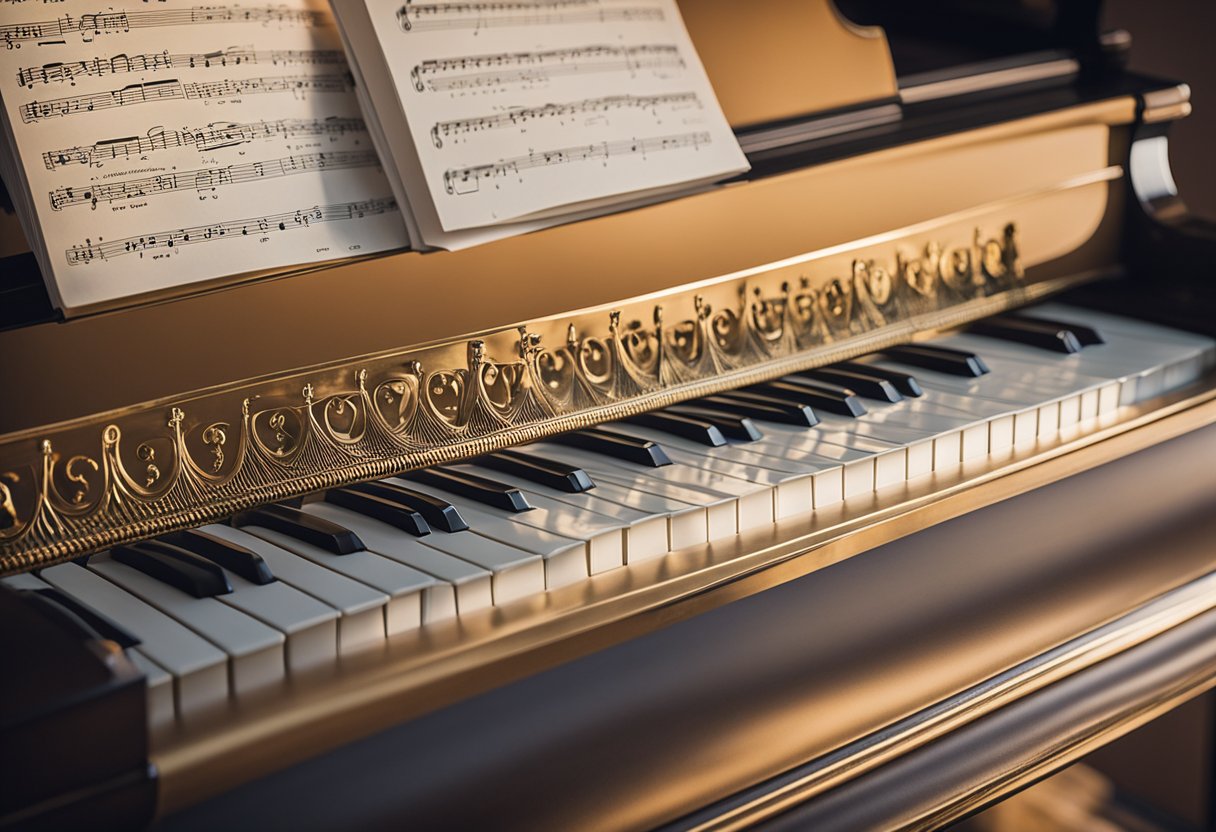
Solo Repertoire
Solo repertoire refers to piano music that is written for a single performer. This type of music can range from beginner-level pieces to advanced virtuosic works. Solo repertoire includes classical music, jazz, pop, and many other genres. Some famous examples of solo piano music include Beethoven’s Moonlight Sonata and Chopin’s Nocturnes.
Concertos
A concerto is a piece of music that features a solo instrument accompanied by an orchestra. Piano concertos are some of the most popular and well-known pieces in the classical repertoire. They typically consist of three movements and showcase the soloist’s technical and musical abilities. Some famous piano concertos include Mozart’s Piano Concerto No. 21 and Tchaikovsky’s Piano Concerto No. 1.
Chamber Music
Chamber music refers to music written for small ensembles, typically consisting of two to eight players. Piano chamber music includes works for piano and one other instrument, such as violin or cello, as well as pieces for piano duet or piano trio. Some famous examples of piano chamber music include Brahms’ Piano Trio No. 1 and Schubert’s Trout Quintet.
Interpreting Piano Scores

When it comes to interpreting piano scores, there are several key elements that you need to keep in mind. These elements include articulation and expression, tempo, and dynamics. By paying close attention to each of these elements, you can bring the music to life and create a truly captivating performance.
Articulation and Expression
One of the most important aspects of interpreting piano scores is understanding how to use articulation and expression. Articulation refers to the way in which you play each note, such as whether you play it staccato or legato. Expression, on the other hand, refers to the way in which you convey emotion and feeling through your playing.
When interpreting a piano score, it’s important to pay close attention to the markings on the page. These markings will give you clues as to how the composer intended the music to be played. For example, if you see a staccato marking, you should play the note short and detached. If you see a legato marking, you should play the note smoothly and connected.
Tempo and Dynamics
Another important element of interpreting piano scores is understanding how to use tempo and dynamics. Tempo refers to the speed at which you play the music, while dynamics refer to the volume at which you play.
Again, it’s important to pay close attention to the markings on the page. If you see a marking for allegro, you should play the music at a fast tempo. If you see a marking for adagio, you should play the music at a slow tempo. Similarly, if you see a marking for forte, you should play the music loudly, while a marking for piano indicates that you should play softly.
Piano Score Notation Software
Features and Tools
Piano score notation software is designed to help you create and edit sheet music for piano. These programs come with a variety of features and tools to help you create professional-looking scores.
One of the most useful features of piano score notation software is the ability to input notes using a MIDI keyboard. This makes it easy to record your playing and quickly turn it into sheet music. Most software programs also come with a library of pre-made musical symbols and notation, making it easy to add dynamics, articulations, and other markings to your score.
Another helpful tool is the ability to playback your score. This lets you hear what your composition will sound like before you perform it, which can help you identify errors and make improvements.
Popular Notation Programs
There are several popular piano score notation software programs available on the market. Here are a few of the most popular:
- Sibelius: This program is widely used by professionals and hobbyists alike. It comes with various features and tools, including the ability to input notes using a MIDI keyboard, a library of pre-made musical symbols, and the ability to playback your score.
- Finale: Another popular program, Finale offers many of the same features as Sibelius. It also comes with a variety of templates and pre-made scores to help you get started.
- MuseScore: This free, open-source program is a great option for those on a budget. It comes with various features and tools, including the ability to input notes using a MIDI keyboard and a library of pre-made musical symbols.
Frequently Asked Questions
How can one learn to read piano sheet music effectively?
Learning to read piano sheet music effectively requires consistent practice and a solid understanding of music theory. Start by familiarizing yourself with the basic elements of music notation, such as note values, time signatures, and key signatures. Then, practice reading simple pieces of music and gradually work your way up to more complex pieces. You may also find it helpful to work with a piano teacher or tutor who can provide guidance and feedback as you learn.
What distinguishes a piano score from other types of musical scores?
A piano score is a type of musical score that is specifically designed for piano music. Unlike other types of scores, such as vocal or orchestral scores, a piano score is typically written for a single instrument and contains both the melody and the accompaniment. Piano scores often include additional markings and instructions, such as fingerings and pedal markings, to help the performer interpret the music.
What are the essential elements to look for in piano sheet music?
When reading piano sheet music, it is important to pay attention to the key signature, time signature, tempo markings, and dynamics. These elements provide important information about the structure and interpretation of the music. You should also look for any additional markings, such as pedal markings or fingerings, that may be included in the score.
How does a beginner start to understand piano notes on sheet music?
For a beginner, understanding piano notes on sheet music can be challenging. Start by familiarizing yourself with the basic elements of music notation, such as note values and staff notation. Then, practice reading simple pieces of music and gradually work your way up to more complex pieces. You may also find it helpful to work with a piano teacher or tutor who can provide guidance and feedback as you learn.
Can you explain the difference between a vocal score and a piano score?
A vocal score is a type of musical score that is specifically designed for vocal music. Unlike a piano score, which typically contains both the melody and the accompaniment, a vocal score is written for the vocal parts only. It may also include a piano accompaniment, but this is secondary to the vocal parts. Vocal scores often include additional markings and instructions, such as lyrics and translations, to help the performer interpret the music.
What are the standard dimensions for piano sheet music?
The standard dimensions for piano sheet music are 9 inches by 12 inches. This size is commonly used for printed sheet music and is designed to fit easily on a music stand. However, some sheet music may be printed in larger or smaller sizes, depending on the publisher and the specific piece of music.
